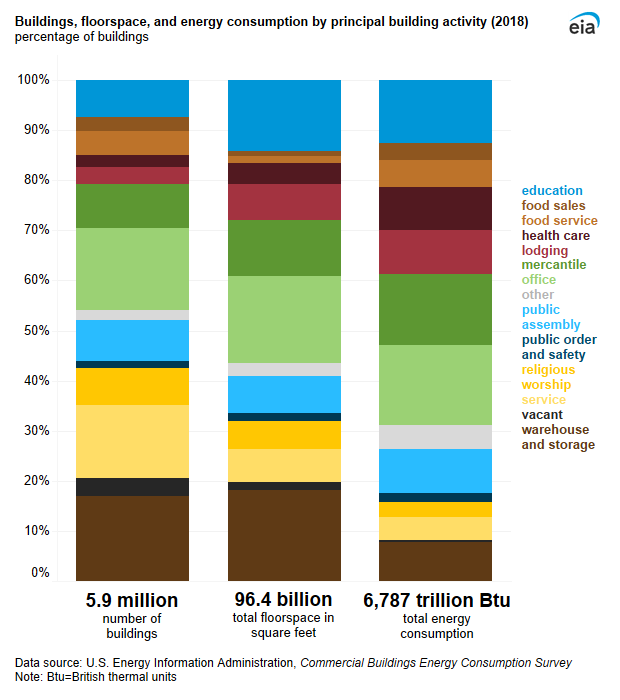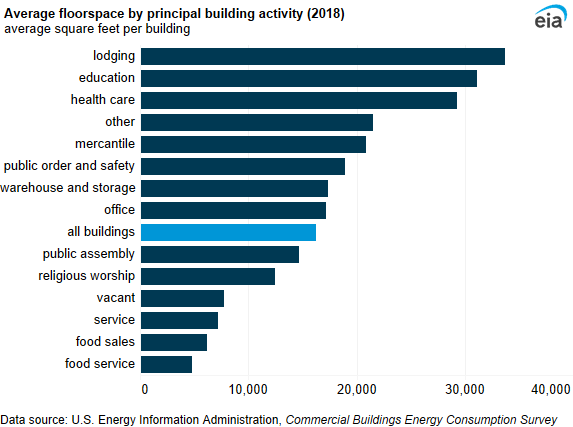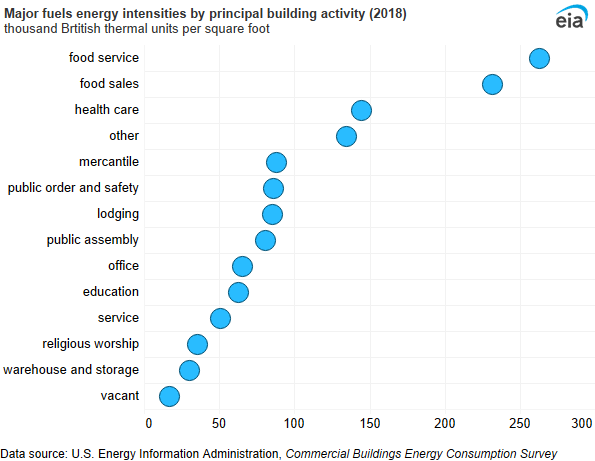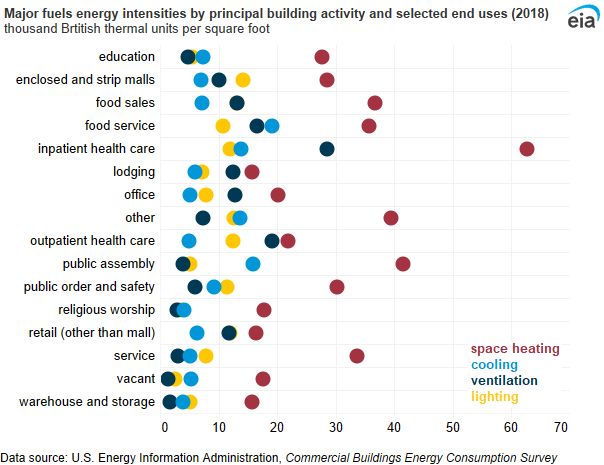2018 CBECS: Principal Building Activities
Overview
The Commercial Buildings Energy Consumption Survey (CBECS) estimates that 5.9 million buildings in the United States with 96 billion square feet of total commercial floorspace used 6,787 trillion British thermal units of energy in 2018.
- Warehouse and storage, office, and service buildings together accounted for almost one-half (48%) of all commercial buildings.
- Warehouse and storage, office, and education buildings accounted for one-half of total commercial building floorspace.
- Office, mercantile, and education buildings accounted for 43% of energy consumption.

The average size of a commercial building was 16,300 square feet. On average, lodging (33,700 square feet), education (31,100 square feet), and health care (29,300 square feet) were the largest buildings, and food service buildings were the smallest (4,800 square feet). The size of inpatient health care buildings (hospitals) significantly affects the health care category’s average floorspace. On average, hospitals were 264,800 square feet per building, but outpatient health care buildings averaged 13,700 square feet.

Food service, food sales, and inpatient health care buildings were the most energy intensive. Vacant buildings were the least energy intensive.

Office buildings used the most electricity (775 trillion British thermal units [TBtu]) and approximately three times more electricity than natural gas (250 TBtu). Education buildings used the most natural gas (328 TBtu). Service, religious worship, public order and safety, and vacant were the only building types that did not use significantly more electricity than natural gas.
![A bar chart showing electricity and natural gas consumption by principal building activity. Office buildings used the most electricity (775 trillion British thermal units [TBtu]) and approximately three times more electricity than natural gas (250 TBtu). Education buildings used the most natural gas (328 TBtu).](images/OV4.png)
At 62.6 thousand British thermal units (MBtu) per square foot, space heating at inpatient health care buildings was the most energy intensive end use of all building types and end uses. Inpatient health care buildings also had the highest ventilation energy intensity (28.6 MBtu per square foot). Food service buildings had the highest cooling energy intensity (19.1 MBtu per square foot).




 /p>
/p>